
According to the International Energy Agency’s “Net Zero by 2050” report, the world will need 2,600 GW of hydropower capacity by mid-century to have a chance of keeping the global temperature rise below 1.5 degrees Celsius. In other words, we would need to build the same amount of hydropower capacity in the next 30 years as we did in the previous 100.
Hydropower is now the leading renewable source and the third largest source of electricity production in the world (15.8% in 2018) behind coal (38%) and gas (23.2%). Over the last 20 years, total hydropower capacity has increased by 70% globally, but its share of total generation has remained stable due to the growth of wind, solar PV, coal and natural gas. Hydropower is the harnessing of energy from a flow of water by means of a turbine connected to a generator, turning it into electricity. Most hydropower plants store water in a dam, which is controlled by a valve to measure the amount of water flowing. More recently, new uses of water as an energy producer have emerged, including the use of seas and oceans for tidal or wave energy.
Emerging and developing economies have led the global hydropower growth since the 1970s, primarily through public sector investment in large-scale plants. Throughout the life cycle of a power plant, hydropower offers great advantages, notably some of the lowest greenhouse gas emissions per unit of energy generated. Moreover, security and flexibility are increased with this mode of electricity production. Power plants can generally ramp up and down their electricity production very quickly, allowing them to adapt to variations in demand or to offset fluctuations in the supply of other sources of electricity. Today, hydropower plants account for almost 30% of the world’s flexible electricity supply capacity. It therefore appears that the role of renewable energy will become increasingly important over the next few decades, both as a low-carbon provider of electricity and to support the huge growth in wind and solar power needed to limit global warming.
In advanced economies, the share of hydropower in electricity generation has been declining and plants are ageing. The business case for hydropower plants has deteriorated due to high infrastructure costs and lack of certainty about long-term revenues. There are also real challenges related to complex permitting procedures, environmental and social acceptance, and long construction periods. In China, the construction of the Three Gorges Dam, which began in 1994, displaced 1.4 million people and has reportedly caused numerous landslides and earthquakes since. Current power plants are also ageing: in North America, the average hydropower plant is nearly 50 years old; in Europe, the average is 45 years old. There is a real need for modernization but also for updated sustainability standards and measures to minimise risk and reduce project delivery times.
In response, governments are stepping up to provide funding and new innovations are emerging. On November 5th, the U.S. House of Representatives passed the more than $1.2 trillion Infrastructure Investment and Jobs Act, which includes over $900M in waterpower incentives for new and existing hydropower, pumped storage, and marine energy. Several startups also have innovated in the face of complex infrastructure development procedures and heavy budget requirements. For example, Natel Energy uses pre-existing facilities and discontinue dam building to make hydropower less costly. It also developed a turbine that requires less cement and steel and which is safer for aquatic life. Dutch startup Blade Runner Energy offers a scalable micro-hydro solution which harnesses the energy of the natural flow of water without needing to build a dam. Others use the power of water differently, especially to avoid the social and environmental problems caused by dams. This is the case of Hace, which is developing a patented process that takes advantage of the immense reserve of wave energy to produce electricity with integrated energy stations. Another example is the US-based startup Big Moon, which is developing a technology to harness tidal energy without installing anything on the ocean floor or creating a negative impact on the environment. The longevity of these installations is often superior than that of wind turbines and solar panels. Tidal plants can last about four times as long. However, the initial costs of this type of project are still very high (for example, the Sihwa Lake Tidal Power Station cost $560m) and research has not yet fully determined the impact of the project, including EMF emissions on marine life.
Thus we see that hydropower has a key potential for the future in the constitution of a new energy mix and in support of other renewable energies. Government action will be crucial in setting their priorities and willingness to modernise the current fleet, especially for China which is set to remain the single largest hydropower market through 2030, accounting for 40% of global capacity growth (the International Energy Agency). Policy measures that provide more certainty about future revenues can reduce investment risks and ensure the economic viability of hydropower projects. But today, this support remains limited, with less than 30 countries targeting hydropower.
2 Key Figures
Global hydropower capacity is set to increase by 17%, or 230 GW, between 2021 and 2030
The International Energy Agency
132 hydropower funded companies
registered by Tracxn in 2019
3 startups to draw inspiration from
This week, we identified three startups that we can draw inspiration from: Blade Runner Energy, Hace and Big Moon.

Blade Runner Energy
The startup develops micro-hydro energy services intended to generate sustainable power. This small-scale hydropower generation can provide energy to hard-to-reach and remote areas, and to achieve faster returns on investment, due to the low capital costs of building these plants.
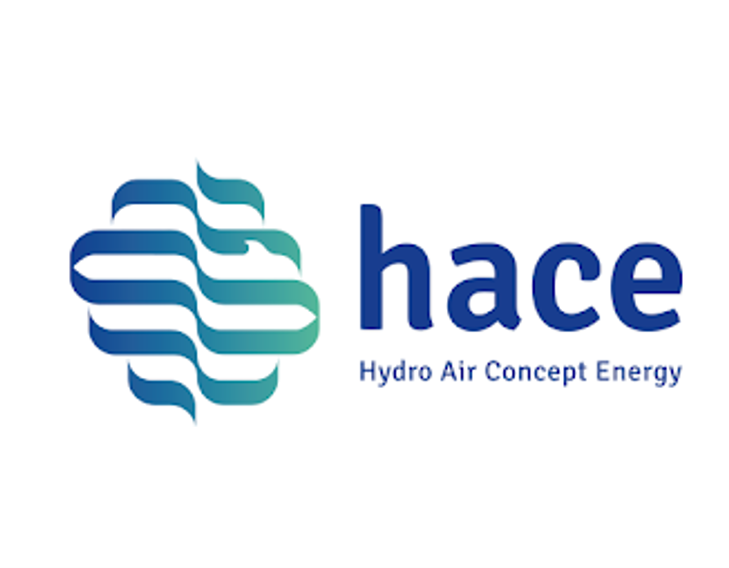
Hace
The startup technology intends to generate electricity by harnessing the power of ocean waves. It offers modular organization of wave power generators makes it possible to create wave power parks or to build coastal protection dikes that integrate energy production.

Big Moon
The startup created a tidal energy technology designed to harness tidal energy without negatively impacting the environment. The solution does not use any type of electrical component and does not attach equipment to the seafloor.
Interested in a startup landscape or in an insights report?
Please fill out our contact form so that we can get back to you very quickly with our product offer.
Want to subscribe to our 123Fab?
Fill out our form to receive the latest insights into your inbox.
123Fab #64
1 topic, 2 key figures, 3 startups to draw inspiration from

Copper plays a major role in the global economy. From thermal and electrical conductivity to corrosion resistance, copper is an extremely versatile metal that has long contributed to the way the world works. By way of illustration, it is used in numerous industries such as telecommunications (cables, wires), electronics (printed circuits, chips), transportation (injection systems, braking circuits), construction (pipes, tubing), currency, etc. In fact, one tonne of copper brings functionality to 40 cars, powers 100,000 mobile phones, runs 400 computers and distributes electricity to 30 homes.
This year, the price of copper broke the $10,000 per ton mark for the first time in 10 years. This indicates an expected increase in global demand, which should benefit Chile, Peru and China (47% of global production). Described as the ‘new oil’, demand for copper has been driven in recent years by its vital role in a number of rapidly growing industries, such as electric vehicle batteries and semiconductor wiring. According to Citigroup Global Markets, demand related to renewable power generation, battery storage, electric vehicles, charging stations and related grid infrastructure accounts for about 20% of copper consumption. Thus, copper is lauded as an essential, structural metal for the energy transition. However, the recent price surge threatens to make decarbonization more costly. At the same time, the global average copper ore grade is expected to decrease, as mines with higher ore grades become exhausted. As a result, there is growing concern about the availability of copper, and several studies have sought to estimate the peak of global copper production using Hubbert’s model, which has been estimated to be between 8 and 40 years from now.
Given the importance of copper, innovation is beginning to spur in the industry. Continuous research and testing of new concepts are being deployed to make processes more efficient, minimize environmental impact, lower energy consumption and improve design. In 2015, Aurus III, a $65 million venture fund focused solely on copper mining innovation, was launched in Chile. Among the startups they have invested in are Ceibo (formerly known as Aguamarina), which focuses on soil stabilization through biomineralization, and Scarab Recovery Technologies, which is centered on recovering valuable materials from tailings. Recycling is also receiving increased interest because copper – like gold, silver and other non-ferrous metals – suffers no loss in quality from the process, making it infinitely repeatable. In addition, it requires up to 85% less energy than primary production. Hamburg-based Aurubis is one of the companies leading the charge on the recycling of copper and other metals by a pyrometallurgy method. This year it announced that it is investing €27 million in a new recycling plant at its Beerse country site. The ASPA plant will process anode sludge, a valuable intermediate product from the electrolytic refining of copper, from the recycling sites in Beerse and Lünen, Germany. New Zealand startup Mint Innovation, however, uses a unique biohydrometallurgy method. Launched in 2016, it has developed a low-cost biotech process to recover precious metals from e-waste. It raised NZ$20 million last year to build its first two biorefineries in Sydney, Australia and northwest England.
It should be noted, however, that the copper recycling business requires considerable financial resources, particularly in terms of working capital and cash flow. This is what led to the near bankruptcy and takeover of the French factory M.Lego, which employs 110 people. Likewise, while secondary production of refined copper has increased in volume and percentage, it is growing at a much slower rate than the waste stockpile. This is primarily due to the fact that the sectors with the highest recycling rates (construction and infrastructure) have their copper tied up for several decades due to the life of the structures built. In contrast, consumer goods, which have a shorter life span, are only recycled at rates between 25 and 40%
In short, copper is projected to be a critical metal in the coming years, with a vital role to play in the energy transition. The gradual depletion of its reserves and dependence on certain countries is driving companies to innovate in the field of recycling, in order to make it both more profitable and sustainable. However, the copper industry will need strong government support to stimulate innovation to avoid a gradual shortage that would contribute to a sharp increase in prices.
2 Key Figures
About 50% of the copper used in Europe comes from recycling
International Copper Study Group (ICSG)
Copper consumption is predicted to rise more than 40% by 2035 compared to 2018
European Copper Institute (2018)
3 startups to draw inspiration from
This week, we identified three startups that we can draw inspiration from: Mint Innovation, Sortera Alloys and Weeecycling.
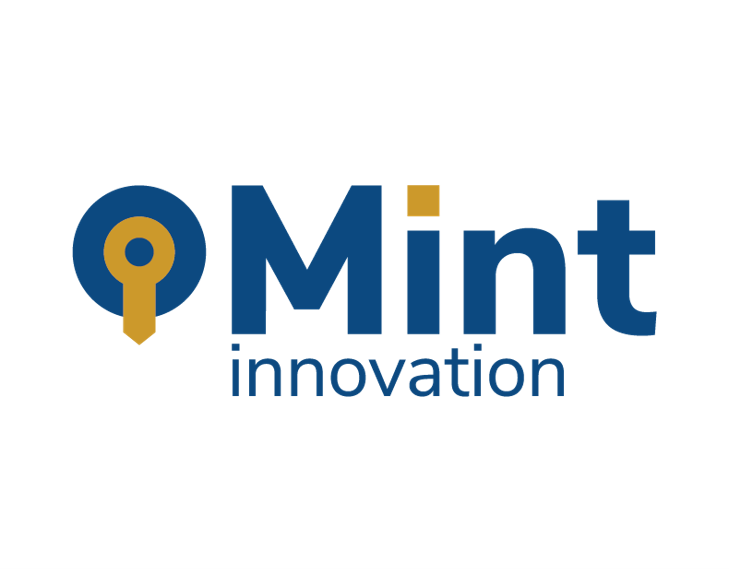
Mint Innovation
The New-Zealand startup has scaled biological processes that recover valuable metals like copper from electronic waste and other residues. The company’s firm uses microbes to selectively and rapidly recover precious metals from various low concentration materials under environmentally benign conditions.
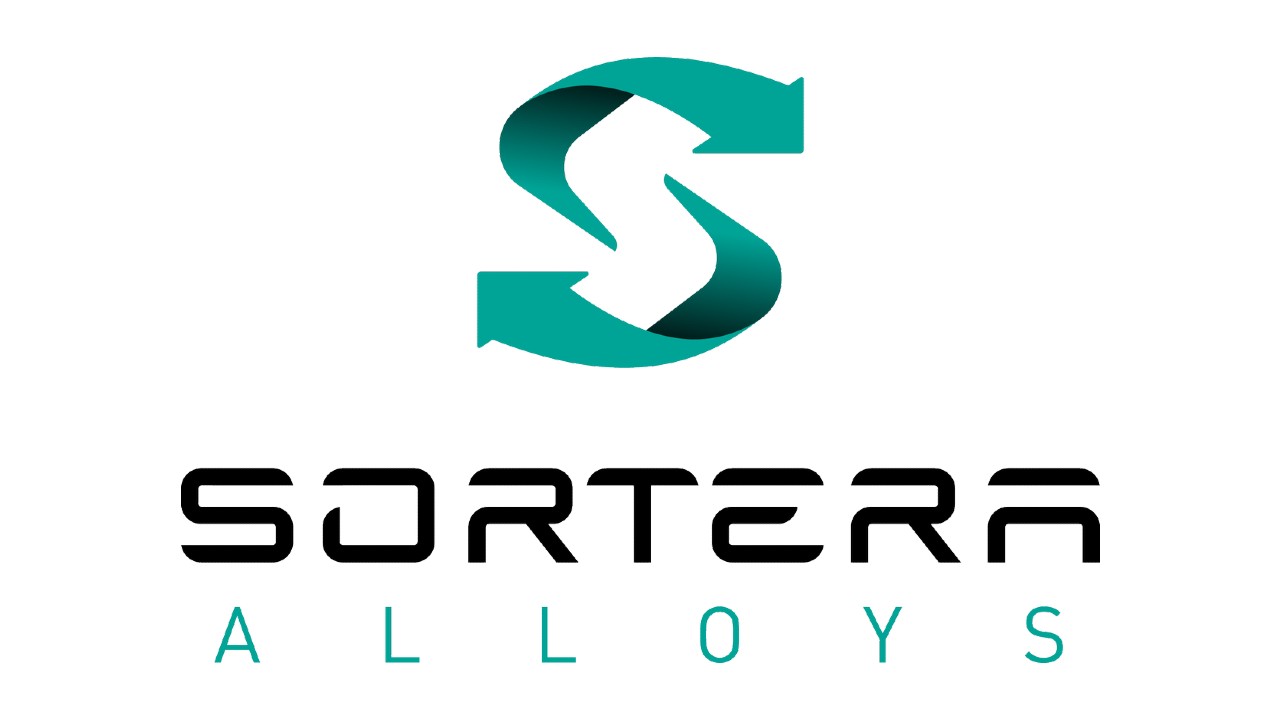
Sortera Alloys
The American startup has developed a sorting system designed to reuse metals recovered from end-of-life products. The company’s system sorts metal by its type and alloy composition through a combination of X-ray fluorescence and optical sensor fusion, artificial intelligence (AI) and machine learning image processing.

Weeecycling
The French startup WeeeCycling has set up a circular economy loop for recycling strategic metals. The company buys electrical and electronic scrap in the world and, via its Morphosis brand, manufactured products. The rare metals are then extracted through a thermal and electrochemical stage to be resold for reuse.
Interested in a startup landscape or in an insights report?
Please fill out our contact form so that we can get back to you very quickly with our product offer.
Want to subscribe to our 123Fab?
Fill out our form to receive the latest insights into your inbox.
123Fab #63
1 topic, 2 key figures, 3 startups to draw inspiration from

On Sunday, October 10, ten European Union countries signed a declaration supporting nuclear energy and its role in the fight against global warming. The debate has been raging for many years on the use of this energy and some countries such as Germany and Austria are opposed to it, as well as many NGOs that consider it a risky technology. This initiative comes at a time of rising energy prices, but also ahead of the European Commission’s classification of energies, which will open up access to green finance and give a competitive advantage to sectors recognized as virtuous for the climate and the environment.
Nuclear energy production involves three main stages: uranium mining, production in nuclear power plants and the treatment of radioactive waste.
Uranium ore is found in uranium mines, mainly in the following countries: Kazakhstan, Canada, Australia, Namibia and Niger. After purification, the uranium is enclosed in a nuclear reactor, which uses the principle of nuclear fission to produce electricity. In this way, uranium nuclei replace the fossil fuels (coal, oil) used in thermal power plants. When a neutron strikes a uranium nucleus, it breaks up, releasing other neutrons and energy in the form of heat. The neutrons released will collide with other uranium nuclei, and so on: the reaction is self-perpetuating, and we speak of a chain reaction. The heat released during the chain reaction is used to produce water vapor. In the same way as in thermal power plants, this steam drives a turbine and its alternator to produce electricity. Once the uranium has been used, there remains a material that can no longer be used to fuel reactors, but which remains radioactive. This is nuclear waste, which is sent to a processing plant, where it is sorted according to its degree of radioactivity. Then, nuclear waste is stored or buried deep underground.
The great advantage of nuclear power is its ability to produce large quantities of energy at a moderate cost. Moreover, this energy is available all year round and the life span of the power plants is quite long (40 years). In terms of CO2 emissions, nuclear power only emits water vapor. Consequently being classified as a low-carbon energy source together with renewables.
However, nuclear power also comes with very complex issues. Among the most frequently cited drawbacks is the management of nuclear waste in the long run, which is still radioactive and harmful to health. Similarly, in case of an accident, the consequences on health can be serious, as shown by the example of the Chernobyl or Fukushima nuclear accidents. Moreover, uranium resources are not unlimited, as can be seen in France, where the mines have been almost exhausted, which leads to energy dependence on other states. In a much shorter term, the construction of nuclear plants is facing drastic challenges as cost and planning are hardly met by the commissioners, hence a trend to also look at smaller reactor technologies.
An increasing number of startups and organizations have entered the nuclear energy business to address these issues. One such case is Transmutex, a Swiss startup, which is developing cutting-edge technologies to transform nuclear waste into clean energy. Its first plant is planned for 2030. Recently, the firm also announced the development of a thorium reactor. Another notable initiative is that of Oklo, a Silicon Valley-based startup, that wants to build tiny nuclear reactors that can run off spent fuel from much bigger, conventional nuclear reactors. Large groups such as EDF in France, with the Nuward project, are also turning to the construction of mini-reactors, with much shorter production times and greater modularity.
The recent litany of announcements in the field of nuclear fusion has highlighted the effervescence of the sector, driven by public research institutes and start-ups. According to the think-tank Zenon Project, about 30 start-ups worldwide are seriously working on this subject. Nuclear fusion consists of transforming two light atoms into a heavier atom to release energy. To do this, a medium must be heated to over 150 million degrees, which requires a lot of energy. This process does not produce any carbon dioxide and uses a very small amount of fuel readily available in nature, unlike nuclear fission of uranium. The fuels necessary for its operation are present in large quantities on earth. Moreover, it generates little radioactive waste with a short life span, and the risks of explosion or runaway are zero. With the ITER project, 35 countries are engaged in the construction of the largest tokamak ever conceived, a machine that is intended to demonstrate that fusion can be used on a large scale to produce electricity.
Although nuclear power has been strongly criticized, it seems necessary, particularly in large consumer countries, to support the energy transition and reduce CO2 emissions. This is why a new wave of countries is now investing in nuclear power, such as England and Finland. Coupled with the development of renewable and low-carbon energies, it has every chance of being a major player in future decarbonization.
2 Key Figures
World’s installed nuclear capacity by 2050: 792 GW
International Atomic Energy Agency
27 companies in nuclear fusion with $592M invested in the last two years
Tracxn
3 startups to draw inspiration from
This week, we identified three startups that we can draw inspiration from: Transmutex, Commonwealth Fusion Systems and ARC Clean Energy.

Transmutex
Geneva-based start-up Transmutex is developing technologies combining a proton accelerator and a subcritical thorium reactor (an alternative fuel to uranium) to transmute the most dangerous nuclear waste into stable elements for producing electricity and hydrogen.

Commonwealth Fusion Systems
The American startup intended to combine proven physics with magnet technology to accelerate the path to commercial fusion energy. The company engages in the design and building of fusion machines that provide limitless and clean fusion energy.
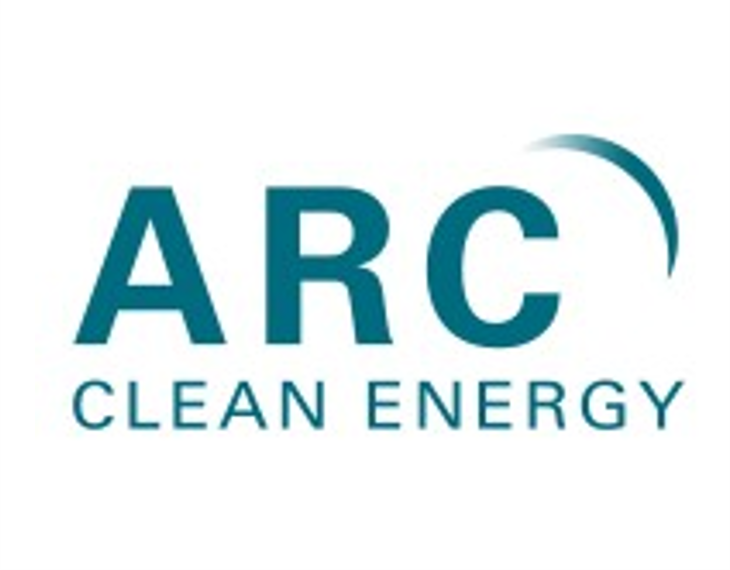
ARC Clean Energy
The Canadian startup intended to offer inherently safe, reliable, and economical carbon-free power. The company focuses on developing an advanced small modular reactor (SMR) which has a simple, modular design providing 100 megawatts of electricity that is cost-competitive with fossil fuels.
Interested in a startup landscape or in an insights report?
Please fill out our contact form so that we can get back to you very quickly with our product offer.
Want to subscribe to our 123Fab?
Fill out our form to receive the latest insights into your inbox.
123Fab #56
1 topic, 2 key figures, 3 startups to draw inspiration from

Since the first flight using blended biofuel took off in 2008, more than 150,000 flights have used biofuels. In May 2021, Air France-KLM flew an Airbus A350 from Paris to Montreal with a 16% mix of sustainable aviation fuel (SAF) in its fuel tanks, produced in France by Total from used cooking oil. This example illustrates the growing concern to limit aviation-related emissions. Indeed, aviation will account for 3.5% of global energy-related CO2 emissions by 2030, compared to just over 2.5% today. Thus, the development and promotion of biofuels for aviation will be essential to reducing carbon emissions of the industry.
Biofuels are fuels derived immediately from living matter, plants or waste. Depending on the type of biomass used, they could lower CO2 emissions by 20–98% compared to conventional jet fuel. The biofuels with the highest emission savings are those derived from photosynthetic algae (98% savings, not yet a mature technology) and non-food crops and forest residues (91-95% savings), taking into account the GHG emissions associated with the production of algal oil but not with transportation.
Worldwide, major aviation players are showing an increased interest in this technology. As a first step, some pioneering airports have already integrated bio-jet fuels into their refueling systems. Today, five airports have regular biofuel distribution: Bergen, Brisbane, Los Angeles, Oslo and Stockholm. Long-term agreements between airlines (like KLM and Lufthansa) and biofuel producers are another sign of their commitment to the use of SAF. They now cumulatively cover around 6 billion liters of fuel (1.6% of total annual consumption).
Meeting this demand will require further production facilities. This is why some airlines have invested directly in aviation biofuel refinery projects or biofuel startups. The first example is a partnership announced in October 2020, between Virgin Atlantic and LanzaTech, on renewable jet fuel that will power planes from Shanghai and Delhi to Heathrow within two to three years. Recently, United Airlines has also joined the biofuel race, investing $30 million in Fulcrum BioEnergy. United Airlines will be both an investor and a regular customer of Fulcrum, a California-based company that has developed a technology turning municipal waste into sustainable aviation fuel. In January 2021, Qatar Airways announced it would invest in Byogy Renewables, a US startup that produces advanced biofuels (jet fuel and gasoline) from any source of bioethanol.
Corporate investment in biofuels is a rising and necessary trend, as most aviation biofuel production pathways are not yet mature. The four major ones are:
- HEFA bio-jets (Hydroprocessed Esters and Fatty Acids): a process that uses oleochemical feedstocks such as oilseed crops and fats. It is currently the only technically mature and commercialized process. It is therefore expected that HEFA will be the main biofuel used in aviation in the short to medium term.
- FT fuels (gasification through the FischerTropsch): a method that uses municipal solid waste or woody biomass as feedstock.
- SIP fuels (Synthesised Iso-Paraffinic): biochemical conversion processes, such as the biological conversion of biomass (sugars, starches or lignocellulose-derived feedstocks) into longer chain alcohols and hydrocarbons.
- ATJ fuels (Alcohol-to-jet based on isobutanol): a process that includes “hybrid” thermochemical or biochemical technologies; the fermentation of synthesis gas; and catalytic reforming of sugars or carbohydrates.
However, before we witness the widespread use of biofuels in aviation, several challenges must be overcome. The major constraint is the high cost of the technologies compared to fossil-based jet fuels. For instance, the production cost of HEFA is about $1,500/ton of bio-jet fuels, and fuel costs are the largest overhead expense for airlines, accounting for an average of 22% of direct costs. Secondly, to fulfill the potential of aviation biofuels, further technological developments are needed.
Policy frameworks have a key role to play in this crucial early phase of SAF industry development. Without a supportive policy landscape, the aviation industry is unlikely to scale biofuel consumption to levels where costs fall and SAF becomes self-sustaining.
To conclude, the aviation biofuels market is likely to grow exponentially. Several startups are seizing this opportunity and collaborating with larger players, such as airlines. Government support, through policies and financial incentives, is essential to secure this growth potential and pave the way for more decarbonized air transport.
2 Key Figures
43 sustainable aviation fuel startups
registered by Traxcn
The sustainable aviation fuel market is expected to reach $15.3bn by 2030
The global aviation biofuel market was estimated at $66 million in 2020 and is expected to reach $15.3 billion by 2025, at a CAGR of 72.4%
3 startups to draw inspiration from
This week, we identified three startups that we can draw inspiration from: BioRefly, Sundrop Fuels, and Fulcrum Bio-energy.

BioRefly
The German startup BioRefly is an operator of an industrial scale demonstration biorefinery to produce lignin-based aviation fuels. It is developing technologies allowing an increased and more economical utilization of selected renewable lignocellulosic raw materials for the production of second-generation biofuel for aviation.

Sundrop Fuels
This US startup is the developer of renewable energy technology. It is using a proprietary high-temperature bioreforming system to transform cellulosic biomass into clean, affordable, renewable gasoline, jet and diesel fuels. It uses a high-temperature solar gasification process that turns natural gas combined with any plant material into liquid transportation biofuels.
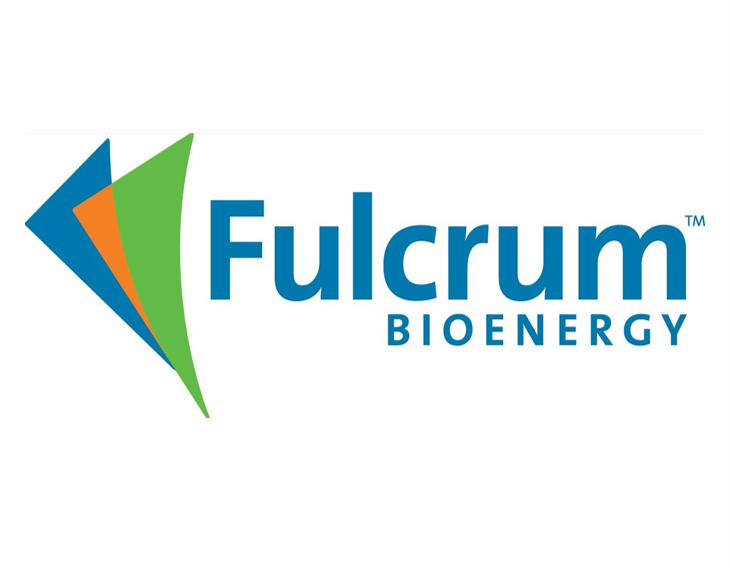
Fulcrum
Fulcrum is an American startup that produces sustainable fuel intended to reduce reliance on imported oil. The company’s technology involves a process of converting municipal solid waste into low-carbon transportation, enabling clients to provide customers with low-cost and low-carbon drop-in fuel that is competitively priced with traditional petroleum fuel.
Interested in a startup landscape or in an insights report?
Please fill out our contact form so that we can get back to you very quickly with our product offer.
Want to subscribe to our 123Fab?
Fill out our form to receive the latest insights into your inbox.
123Fab #55
1 topic, 2 key figures, 3 startups to draw inspiration from
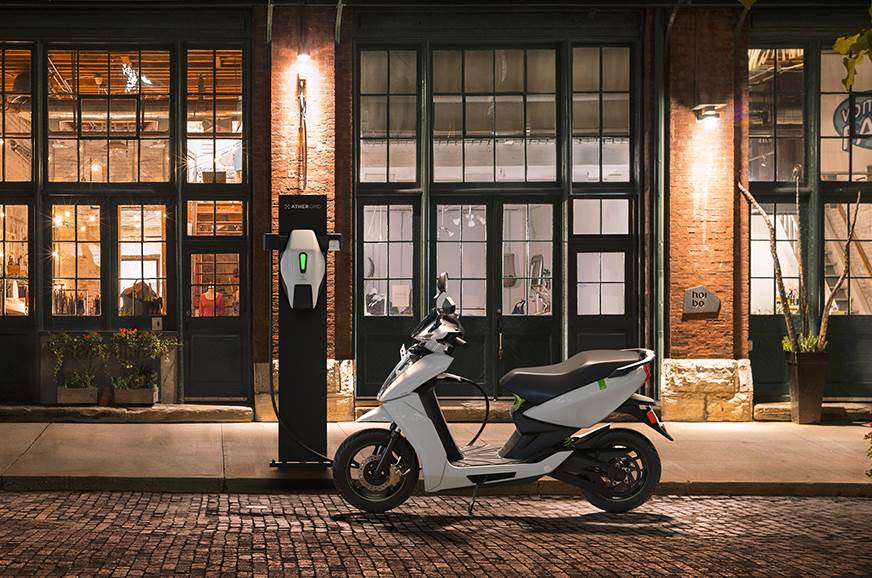
Last week Ola Electric — the electric vehicle arm of ride-hailing giant Ola — raised $100 million in debt from the Bank of Baroda. The money will be used towards closing the first phase of development of its 500-acre factory, which is expected to manufacture 10 million electric two-wheelers a year at full capacity and 15% of the world’s e-scooters by 2022.
Other two-wheeler manufacturers have made important announcements regarding their move into the electric segment. Harley-Davidson earlier this month introduced the first e-motorcycle under its new LiveWire brand. The company is entering the EV arena in the face of competition from several e-motorcycle startups that are attempting to convert gas riders to electric. One of the leaders is California-based startup Zero Motorcycles, which has 200 dealers worldwide. Meanwhile, Lime added a new member to its electric vehicle family in January: e-mopeds. Currently being piloted in Paris and Washington DC, these mopeds are manufactured by NIU, a Chinese company that also supplies mopeds to New York City-based mobility company Revel.
Before we proceed with our analysis, a note on terminology. Some people refer to e-mopeds as e-scooters or vice versa. For others, the term e-moped is used interchangeably with e-motorcycle. For clarity, at Aster Fab, we define e-motorcycles as electric vehicles with an engine size greater than 150cc, e-mopeds with an engine size smaller than 150cc. E-scooters have a floorboard that one can stand on and do not exceed a speed of 15mph.
As the electrification of the automotive industry advances, the electrification of two-wheelers is slowly following the same path, but with less enthusiasm. After the proliferation of e-scooters, the first e-mopeds and e-motorcycles are beginning to hit the market. While BMW has led the electrification efforts in the motorcycle market so far, the momentum for e-motorcycles is gradually building among major manufacturers. Relatively silent on the subject in recent years, Yamaha last month announced its commitment to achieving full lifecycle carbon neutrality for its products by 2050. The company sees itself selling 90% of electric motorbikes by 2050. Honda has also begun filing its first patents. E-motorcycles have less growth potential than e-mopeds, but this electrification revolution is driven by a combination of forces:
- Climate regulations and incentives — two-wheel EVs (E2Ws) and three-wheel EVs (E3Ws) are driven by government regulations and incentives to reduce carbon emissions. In China, internal combustion engine (ICE) engines were banned in 2011. More recently, e-motorcycles and e-mopeds will be exempt from paid parking as of January 2022 in Paris.
- Falling battery prices and lower total costs of ownership — over the next few years, the price of batteries is expected to drop from $200-$280 per kilowatt-hour to $90-$130. This is expected to decrease the cost of ownership and potentially propel demand.
- The emergence of innovative go-to-market models — battery-as-a-service is an example of an innovative model. By decoupling the battery from the sale of the vehicle, as well as greatly improving convenience through express refueling, this model reduces up-front acquisition costs.
- The desire for high-end connectivity — for some consumers, electric two-wheelers are more appealing than standard ICE vehicles because of their higher connectivity.
Despite government incentives, electric two-wheelers are facing the same barriers to adoption as the automotive market. Primary concerns are battery life, limited charging infrastructure and lack of models. For e-motorcycles, additional impediments include the range requirements of consumers (250 miles or more), lack of consumer acceptance (no sound, vibration or engine heat) and ultimately the lack of participation of major manufacturers. Thus, battery swapping will play a key role in accelerating electric two-wheeler adoption. Honda, Yamaha, KTM and Piaggio pushed further into this space in March by announcing their intention to create a swappable battery standard. Indeed, battery swap business models reduce or eliminate market barriers around extended charging times, range anxiety, high upfront costs and battery reliability because riders easily can carry and switch out batteries on the go. Quintessentially a two-wheeler country, India is an exception leading the way with its government incentives and its entrepreneurship (driven by Hero Electric, Ather Energy, Ampere, Okinawa and many more). Just like in China, Vietnam, Indonesia, Thailand, the Philippines, the high urban density rates and high percentages of households that own two-wheelers make these countries best suited for electric two-wheelers. In fact, more than 2 million electric rickshaws are currently running on Indian roads.
Globally the landscape is highly fragmented with many players competing intensely for market share. New entrants even dominate the market in some regions, preventing traditional OEMs from having the same market share as with ICE vehicles. At the same time, other players are tapping into the emerging opportunities associated with electric two-wheelers. Energy companies and utilities, such as Tata Power in India, are acquiring EV-charging infrastructure and capturing upstream value by expanding their offer to battery management systems. While Tier-1 suppliers are moving into new product segments such as electric power trains and retrofit kits. Thus electrification, along with vehicle automation and many other disruptions, is reshaping the traditional value pool.
In conclusion, it is undeniable that the two-wheeler market is gaining momentum worldwide (especially in emerging markets) and that well-established OEMs and startups are tapping into the opportunity to capture new value. Although adoption in the e-motorcycle segment is much lower than for e-mopeds, both markets are expected to grow in the near future, despite the widespread charging infrastructure required. Given the intimate link between electrification and autonomy, the unanswered question is whether it will be traditional OEMs or new entrants with strong software capabilities (such as Tesla in the automotive industry) that will lead the two-wheeler electrification revolution. For e-mopeds, pure players appear to be in a strong position given the low connectivity requirements, while the high battery requirements for e-motorcycles will likely force traditional OEMs to invest heavily in battery swapping technologies and join forces with software companies.
2 Key Figures
190 electric two-wheeler startups
registered by Traxcn
The electric two-wheel market is expected to reach $11.3bn by 2025
The global electric scooter, moped & motorcycle market was estimated at $5.8 billion in 2020 and is expected to reach $11.3 billion by 2025, at a CAGR of 14.2%
3 startups to draw inspiration from
This week, we identified three startups that we can draw inspiration from: Zero Motorcycles, Gogoro and Noil.
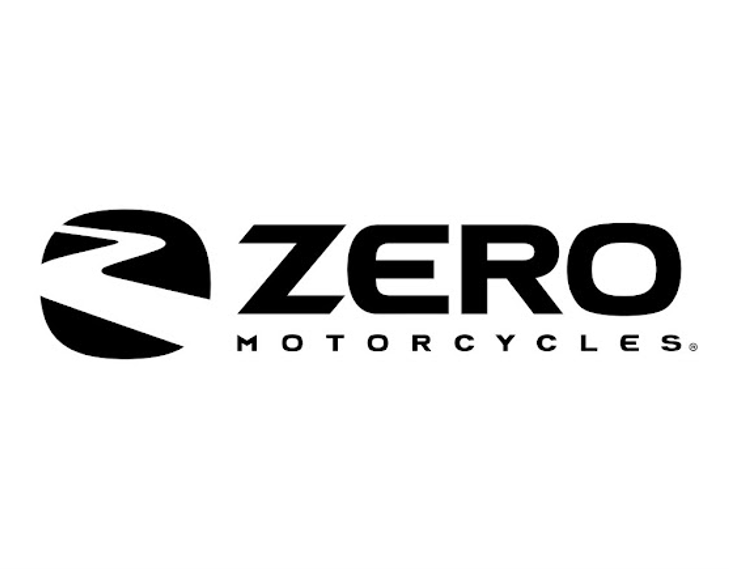
Zero Motorycles
Founded in 2006, Zero Motorcycles is a California-based manufacturer of electric motorcycles. Earlier this month, Zero Motorcycles launched its all new FXE model.

Gogoro
Founded in 2011, Gogoro is a Taiwan-based startup that developed a battery swapping refueling platform for urban electric two-wheel scooters, mopeds and motorcycles.

Noil
Founded in 2019, Noil is a France-based startup that retrofits thermal mopeds to electric in under 48 hours.
123Fab #54
1 topic, 2 key figures, 3 startups to draw inspiration from
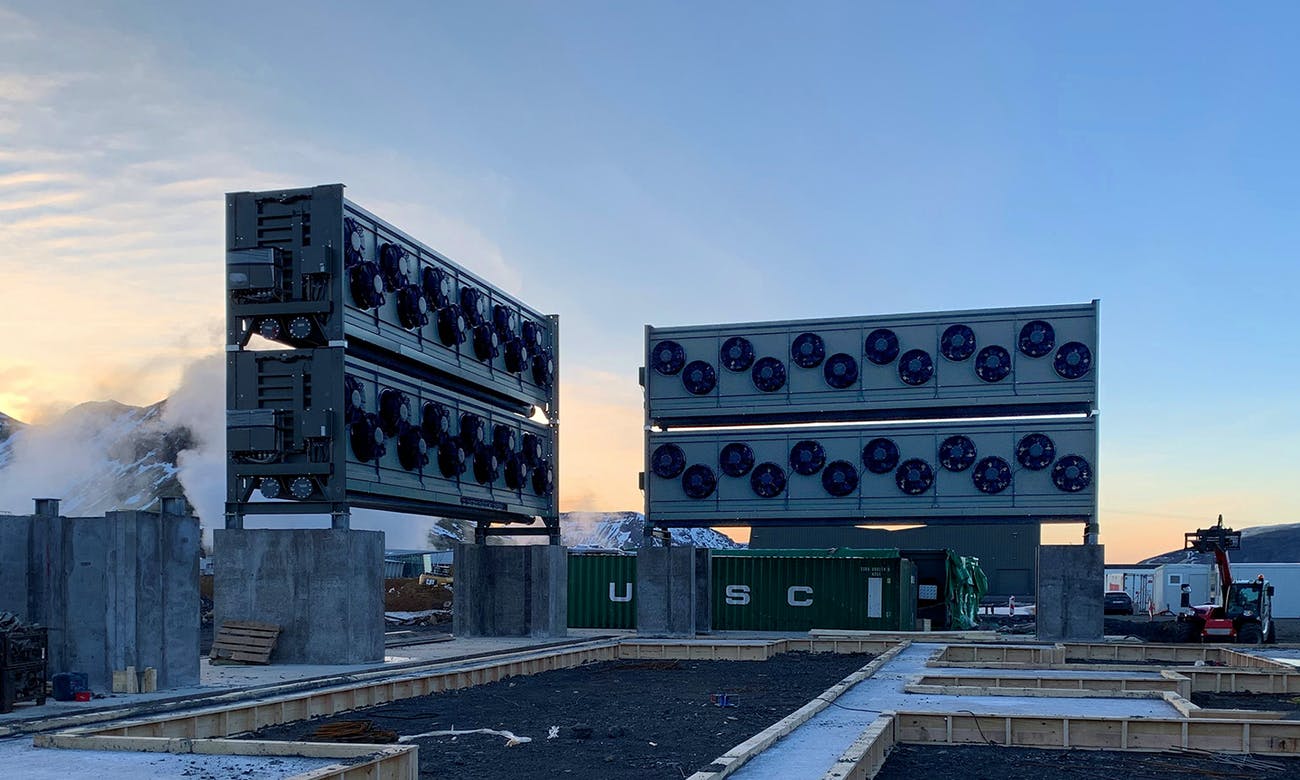
On July 2nd 2021, Storegga and Carbon Engineering announced the creation of Europe’s first large-scale carbon dioxide (CO2) direct air capture (DAC) facility in the north east of Scotland. The facility plans to remove between 0.5M and 1M tons of CO2 from the atmosphere each year to help achieve the critical target of zero net emissions by 2050. Players will benefit from Scotland’s extensive offshore storage sites to permanently store CO2 deep below the seabed. This project is largely funded by the UK Department for Business, Energy, and Industrial Strategy to meet the government’s climate goals.
CCUS stands for Carbon Capture, Utilization, and Storage. It is the process of capturing carbon emissions for permanent storage in deep geological formations or for use in the production of fuels, chemicals, building materials, and other products containing CO2. Direct Air Capture is one of the carbon capture technologies that involves capturing CO2 directly from the atmosphere and not from industrial processes like the other methods. It is expected to play a key role in the transition to a net-zero energy system, as it can offset hard-to-abate emissions (aviation, heavy industries) and facilitate a faster transition. There are currently 15 direct air capture plants in operation worldwide, capturing over 9,000 tCO2/year. The main benefits of direct air capture as a carbon removal option are its limited land and water footprint and the possibility of locating plants close to suitable storage or utilization sites, thus eliminating the need to transport CO2 over long distances. However, the major challenge is to identify who is accountable and should pay for it, as the emissions captured are not linked to any precise site. Thus, to cover their costs, DAC companies have to sell the by-product, the CO2, or convert it into various valuable purposes.
Today, two technological approaches are used to capture CO2 from the air:
- Liquid DAC systems pass the air through a chemical solution, such as a hydroxide solution, that removes the CO2 while returning the remaining air to the environment
- Solid DAC systems use sorbent filters that chemically bind to CO2. When the filters are heated, they release the concentrated CO2, which can be captured for storage or use.
Both solid and liquid capture technologies can be powered by renewable energy sources (such as geothermal, solar PV, and wind). Solid DAC can also be powered by recovering waste heat, which signficantly reduces lifecycle emissions. Emissions from the DAC process must be taken into account when measuring the total CO2 impact of the process. A clean energy source is therefore essential to enable both negative emissions and low-carbon fuels.
DAC technologies have improved very rapidly in recently years with increasing financial support. Many public and private players are becoming aware of the need to reverse climate change and are investing in R&D and startups. In August 2020, the leader Climeworks raised $110M from private investors, the largest ever investment in DAC. There are also incentives such as Elon Musk’s XPrize Carbon Removal that challenge designers to develop machines to extract large amounts of CO2 directly from the atmosphere or oceans for $100 million. In terms of government support, the U.S. Department of Energy (DOE) announced in June $12 million in federal funding for six R&D projects that aadvance DAC technology. They are creating tools that will increase the amount of CO2 captured by DAC, lower the cost of materials, and improve the energy efficiency of carbon removal operations.
However, all the support goes to a limited number of players, as the market is very concentrated. Only a dozen or so startups benefit from it and concentrate breakthroughs and partnerships with key players or corporates. A very recent innovative start-up is Co2Rail which seeks to enhance DAC by using train-loaded modules to help improve airflow and thus capture CO2. Their systems are fitted to trains already in regular service. Co2Rail uses the significant amount of wasted energy produced by the dynamic braking system of freight trains to power their direct air capture systems. This unique approach can enable gigaton-scale CO2 capture in an energy-efficient manner, making it affordable for downstream CO2 users to make economical use of the captured CO2. Climeworks has signed agreements with both Carbfix, a pioneer carbon storage start-up, and ON Power, the Icelandic geothermal energy provider, to lay the foundation for a new plant that will significantly scale up carbon removal and storage in Iceland. The new plant will be able to permanently remove 4,000 tons of CO2 from the air per year, safely stored through natural underground mineralization.
Unlike on-site CO2 emission capture, large corporations rely heavily on these startups, rather than developing technologies in-house. They often join forces with them to secure access to this crucial technology. For instance, United Airlines said last December that they would invest in DAC start-up 1PointFive. Occidental Petroleum has signed a partnership with Carbon Engineering to build a plant that will capture up to 1 MtCO2 each year, used in enhanced oil recovery, to be operational in 2023.
However, there are still many challenges and obstacles to overcome in order to implement large-scale DAC facilities. Several large-scale demonstrations are still needed to refine the technology and reduce capture costs. Indeed, DAC is the most expensive carbon capture approach because the CO2 in the atmosphere is highly diluted, which contributes to higher energy needs. Costs and energy needs vary according to the type of technology (solid or liquid) and whether the captured CO2 is to be stored geologically (where it has to be compressed at very high pressure) or used immediately at low pressure. The future cost of direct air capture is uncertain, typically ranging anywhere from $100/tCO2 to 1,000/tCO2, while industrial CO2 capture is more likely to range between $35/tCO2 and $60/tCO2.
In the near term, large-scale demonstration of DAC technologies will require targeted government support, including grants, tax credits, and public procurement of CO2 offsets. Technology deployment may also benefit from corporate sector initiatives and pledges to become carbon-negative, such as Microsoft’s announcement of a $1 Bn climate innovation fund for carbon reduction, capture and removal technologies. Longer-term deployment opportunities will be closely linked to robust CO2 pricing mechanisms and accounting frameworks that recognize and value the negative emissions associated with storing CO2 captured from the atmosphere.
To conclude, carbon removal technologies such as direct air capture are not an alternative to cutting emissions or an excuse to delay action, but they can be an important part of the suite of technology options used to achieve climate goals. For this reason, direct air capture needs to be demonstrated at scale, as soon as possible, to reduce uncertainties about deployment potential and costs, and to ensure that these technologies can be made available to support the transition to net-zero emissions and beyond.
2 Key Figures
18 DAC startups
registered by Pitchbook
DAC market expected to reach 833 million MtCO2 by 2050
The global DAC market was estimated at 6,370 MtCO2 in 2020 and is expected to reach 833 million MtCO2 by 2050, at a CAGR of 240%
3 startups to draw inspiration from
This week, we identified three startups that we can draw inspiration from: Carbon Engineering, Global Thermostat, and Heirloom.
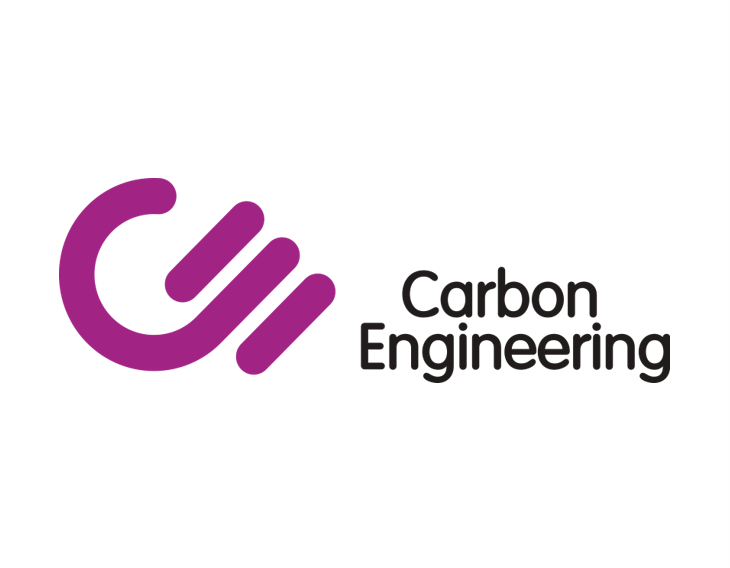
Carbon Engineering
Founded in 2009, Carbon Engineering is a Canadian-based clean energy start-up that uses direct air capture technology at a large scale so it can be permanently and safely stored deep underground or turned into ultra-low carbon synthetic fuels, enabling clients to address their carbon footprint and achieve critical net-zero targets by providing a tool to deliver climate-relevant quantities of permanent carbon removal, and delivering clean, affordable energy to the world.

Global Thermostat
Global Thermostat is a US-based start-up focused on developing technology solutions for direct air carbon capture. It has a patented technology working with CO2 directly from air or from industry smokestacks. The technology uses residual heat to capture more CO2 than power plants or industrial facilities emit. The captured CO2 has multiple applications such as carbonating beverages.

Heirloom
Heirloom Carbon Technologies is an American start-up that aims to remove 1 billion tons of carbon dioxide using carbon mineralization for a cost-effective direct air capture system. The company’s system deploys carbon dioxide removal at a gigaton-scale that captures and processes atmospheric CO2 and minimizes second-order impacts and reduces extraction, thereby helping in restoring the atmosphere using natural processes.
123Fab #53
1 topic, 2 key figures, 3 startups to draw inspiration from
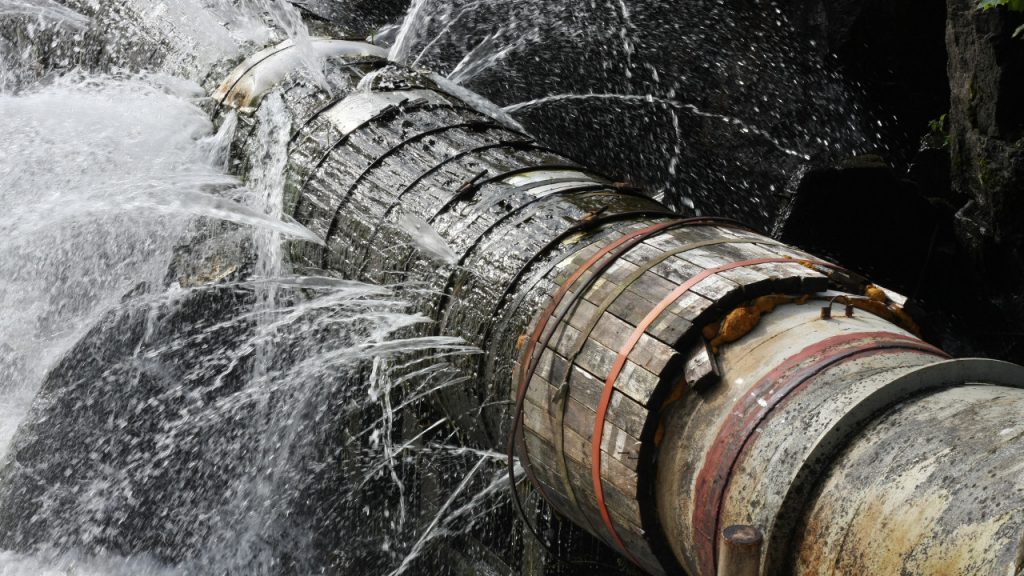
On July 2nd 2021, a fire on the surface of the Gulf of Mexico erupted after a gas leak from an underwater pipeline sparked a blaze. Although the fire was extinguished 5 hours later by state-owned oil company Pemex and the company claims that there was no leak, hundreds of such industrial accidents occur every year worldwide.
In recent years, the reliability of the power grid has often been put in the spotlight. Grid operators are faced with 4 main challenges:
- The aging infrastructure: the vast majority of energy transmission and distribution lines, as well as oil & gas pipelines, were built in the second half of the 20th century with approximately a 50-year life expectancy. The network is therefore aging and many lines have exceeded their intended lifespan. According to Black & Veatch, 60% of electric distribution lines in the US have surpassed their 50-year expectancy.
- The severe weather events: aside from aging, the grid was not originally engineered for severe weather events. According to a study carried out by the EU, annual spending in Europe to fix climate change-related damage to energy infrastructure was estimated at €500 million in 2018. This figure was set to grow exponentially by 400% by 2020, by 860% by 2050 and by 1,600% by 2080.
- The increasing demand: global demand for energy is increasing rapidly, because of population and economic growth. The US Energy Information Administration (EIA) projects a 48% increase in global energy consumption between now and 2040. New infrastructure will need to be built to absorb future energy demand, especially in remote areas.
- The integration of renewables: the transition from traditional fuel to renewable energy sources is putting the grid under further strain. Firstly because most renewable sources are located remotely requiring additional long-distance, high‐capacity transmission to match supply with demand. Secondly, renewables complicate the management of the grid because they are variable – they depend on the weather.
In other words, traditional power grids are not designed to meet today’s emerging trends, such as the greater penetration of distributed generation resources, the need for greater resilience and renewable intermittency. Thus, there is a real need for utilities and developers to make substantial investments to replace, upgrade and expand new and existing transmission and distribution (T&D) infrastructure.
New technologies are emerging to transition to a new type of grid, a modern one, with the potential of addressing today’s grid challenges. These include dynamically optimizing grid operations and resources, detecting and mitigating disturbances, integrating diverse generation sources, providing strong protection against physical and cyber risks, etc. Among the segments of the value chain, the greater focus of the smart grid is on distribution. Transmission systems are already equipped with extensive sensing and control, which are enhanced by newer technologies (synchrophasors, associated controls, decision-support systems, etc), whereas distribution needs emphasis.
Some innovations have already begun to change the landscape. In the electric grid, technology has moved from electromechanical meters to automated meter reading (AMR) to advanced metering infrastructure (AMI). These smart meters are capable of sensing energy, voltage, power quality and more. AMI meters allow utilities to perform actions at a level unforeseen in the past, so much that the scope for innovation in the data space remains huge. Energy storage has also opened up opportunities to store energy when it is cheap and discharge it when it is expensive. RTE, France’s transmission system operator, is running a pilot to automate storage and injection orders via a smart grid platform controlled by an intelligent robot. In the oil & gas industry, pipeline leakage technologies have emerged. In September 2020, BP announced a $5m investment into Sateltyics, which uses machine learning and spectral imaging to predict and counteract dangerous pipeline leakages. On the flip side, the multitude of sensors and connected devices has resulted in many points that can now be hacked. The ransomware attack on Colonial Pipeline Co. two months ago ignited concerns about cybersecurity in Europe, where lawmakers are drafting laws to improve the way energy companies protect themselves against hackers.
The innovations brought to market by startups are mainly software. In fact, experts say that much of the value to be captured by smart grids lies in the data and software improving operations and maintenance. Startups using software and new materials to compensate aging infrastructure include:
- AiDash uses machine learning algorithms to analyze satellite images and infer the encroachment of vegetation on power lines to avoid outages
- Grid4C uses AI to detect, diagnose and predict malfunction and inefficiencies for assets on the grid, without the installation of expensive hardware
- Depsys develops power-grid modular systems designed to help grid operators to seamlessly integrate the increasing amount of renewable energy sources
- ALD Technical Solutions repairs, retrofits and upgrades offshore and onshore infrastructures using high quality and high-performance composite materials
Microgrids are another alternative to the aging energy grid. Fed by distributed sources, such as solar panels or diesel generators, this resilient alternative can keep a local network powered when the main grid is down – whether due to a cyberattack, a natural disaster or even a breakdown. Microgrids helped Australia get power back after the bushfires last year.
To conclude, the aging of energy infrastruction opens the way for more systemic thinking. Rather than replacing the existing infrastructure, a national reflection is underway to redesign an entirely new system capable of meeting the challenge of renewable energies grid integration. Given the high investment new infrastructure represents, budget prioritization upstream and selection of the technologies to be implemented will be crucial.
2 Key Figures
780 smart grid startups
registered by Tracxn
Smart grid market expected to reach $92.1 Bn by 2026
The smart grid market is estimated at $29.3 Bn in 2019 and is expected to reach $92.1 Bn by 2026, at a CAGR of 17.8%
3 startups to draw inspiration from
This week, we identified three startups that we can draw inspiration from: Grid4C, Envelio, and Scale Microgrid Solutions.

Grid4C
Grid4C’s solutions use smart meter and IoT data to predict, detect, and diagnose faults and inefficiencies for grid assets and home appliances, without the need for hardware or sensor installations.

Envelio
Envelio’s platform helps network providers integrate renewable sources and electromobility by offering a digital assistance system for technical planning and operations processes.

Scale Microgrid Solutions
Scale Microgrid Solutions delivers sustainable and reliable power to commercial and industrial customers by deploying unique, fully-financed microgrids and distributed energy solutions.
123Fab #49
1 topic, 2 key figures, 3 startups to draw inspiration from

In May 2021, Barbara Pompili, the French Minister of the Ecological Transition, announced the selection of 215 startups and SMEs for the GreenTech Innovation label, among which 45 are solutions for more sustainable buildings and better energy efficiency. These startups will be supported by the government for their development and commercialization. This is one example out of many government initiatives to boost the building energy efficiency and renovation market.
The International Energy Agency estimates that the building sector is responsible for 42% of global electricity consumption. Energy efficiency is about performing the same tasks with less energy. Buildings can go down to net-zero energy consumption which means that the total amount of energy used equals the amount of renewable energy created on-site or by off-site renewable sources. As most of the energy used in buildings is for maintaining a comfortable temperature (heating or cooling) and good ventilation, effective thermal insulation has a major impact on energy consumption. Thus, in the context of global efforts to reduce energy consumption and reach the 2050 net-zero target, buildings’ energy efficiency is more than necessary. To achieve it, most of the efforts need to focus on renovating and retrofitting existing buildings, rather than new performant ones, as they will represent more than 90% of 2050’s properties. It has ecological and economic benefits as it reduces the amount of energy consumed (and associated GHG emissions) while lowering the energy bill for the occupants. The top priority are the « thermal strainers » which are the buildings with the worst energy efficiency, where cold enters in the winter and heat enters in the summer. In France, they correspond to the buildings with an energy consumption above 330 kWh /sqm /year, which are ranked F or G. There are three main thermal losses. The surfaces (roof, walls, windows, ground floor) between the interior and exterior account for up to 80% of energy loss. Then, the controlled mechanical ventilation and ventilation grilles, which ensure the renewal of indoor air, make up to 20% to 25% of energy loss. Finally, the thermal bridges, which are points in construction where the insulation barrier is interrupted, contribute to 5% to 10% of heat loss. Thus, efforts should be put on external cladding and filling the thermal bridges to retrofit the existing buildings.
Different types of innovative solutions exist to improve buildings’ energy efficiency:
- Measure: Many sensors and IoT technologies have been developed to compute more accurately buildings’ energy consumption. French start-up Smart Impulse, for instance, has developed a smart meter to measure the electricity consumption of buildings by usage (lighting, IT, heating, etc.) which gives insights on potential energy savings.
- Retrofit: Picking the right materials highly contributes to buildings’ efficiency. New technologies have been developed to avoid energy loss, such as the thermal reflective resin for roofs of the start-up Cool Roof. Their solution aims to return roughly 90% of the solar heat. It protects the roof from physical damage while maintaining a comfortable temperature inside the building. Moreover, the Dutch EnergieSprong approach is being deployed in France, UK, and Germany for a quick and affordable retrofit of the existing buildings into zero-energy ones.
- Optimize: There are more and more integrated energy management systems that measure and autonomously regulate energy consumption. Thanks to numerous sensors and IoT devices, the American start-up Budderfly provides a solution optimizing entire buildings’ energy consumption.
Although these solutions are very promising, some challenges still have to be overcome. First, renovation takes time obtaining the required permits for structural renovations, finding the right partners, and performing it. Then, even if some startups and companies are offering affordable solutions, it remains costly and often requires important initial investments. All the more so as energy-efficiency goals are often secondary to economic considerations and are not taken into account in the property’s life-cycle costs. Another barrier is the fragmentation of the construction industry, which involves many different actors and stakeholders who have varied interests. Finally, the diversity of the social and regulatory contexts – within the EU for instance – makes it hard to scale solutions.
However, most countries are addressing this issue and implementing associated regulations, incentives, and climate change targets. In France, the government has put in place financial support for buildings renovation but also biding policies like the interdiction from 2028 to rent a flat or house with an energy performance rated F or G. In 2021, the French government announced 6.6 million euros for buildings’ energy renovation over 2 years in their economic recovery plan. Another example of an efficient policy in California where homes and buildings are relatively energy-efficient today. Since 1975, the California Public Utility Commission has directed the investor-owned utilities to commit over $US 5 billion to energy efficiency programs, 85% of which has been targeted at retrofit energy efficiency investments in existing buildings. For instance, Netflix has equipped its headquarters in Los Gatos with View dynamic glass, which controls how much light gets in and contributes to saving up to 20% of energy costs.
To conclude, there are a lot of startups that have spotted an opportunity in improving buildings’ energy efficiency, whether it is with hardware and high-tech materials or smart software. The market is far from being addressed, and governments are multiplying incentives to do so, which is very promising as soon as people are willing to make the investment.
2 Key Figures
637 building energy efficiency & management startups
registered by Tracxn
Global efficient building market expected to reach $253 Bn by 2027
The global efficient building market was estimated at $146 Bn in 2020 and is expected to reach $253 Bn by 2027, at a CAGR of 8.15%.
3 startups to draw inspiration from
This week, we identified three startups that we can draw inspiration from: Sensor Flow, View, and 75 Fahrenheit.

SensorFlox
SensorFlow is a Singapore-based start-up that develops room automation and energy management systems focussed on the hospitality sector. Its solution helps automate a building to optimize energy consumption. It includes occupancy sensors, smart thermostats, door sensors, and split unit thermostats.

View
View is a Californian start-up that has created a glass solution that increases and optimizes the amount of natural light in buildings while simultaneously improving energy efficiency, and advancing smart and connected buildings.

75 Fahrenheit
75F is a US-based start-up making smart building automation affordable and easy to deploy. 75F leverages IoT, Cloud Computing and Machine Learning for data-driven building intelligence and controls for HVAC, lighting and energy optimization.
